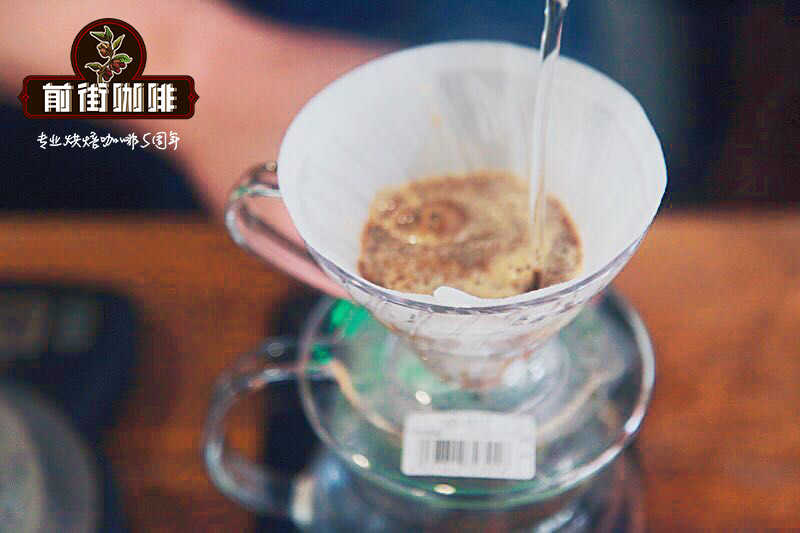Is Indonesian West Java honey processed coffee good to drink? How to cook it to taste good?
Is the coffee processed with Indonesian West Java honey good? How to cook it to taste good?

West Java Province is a first-tier administrative district of Indonesia. Located in the western part of Java, facing the Java Sea to the north and the Indian Ocean to the south, including offshore islands, covering an area of 46300 square kilometers, Java has a tropical rain forest climate, which is hot and humid all the year round. The plains along the northern coast have the highest temperatures, while the mountains are much cooler. High humidity often creates a debilitating climate.
From November to March of the next year is the northwest monsoon period, rainy and cloudy; from April to October is the southeast monsoon period, with more sunny days and less rainfall. The average annual rainfall in Jakarta is about 1760 mm (69 inches). The average daily maximum temperature in Jakarta is 30 ℃ (86 ℉) and the lowest is 23 ℃ (74 ℉). In Tosari (Tosari, 1735 m (5692 m) above sea level) in the inland highlands, the average temperature is 220.8 ℃ (72m 47 ℉). Because volcanic ash periodically fertilizes the land, the soil in Java is very fertile.
Origin: Sunda Hejo, West Java, Indonesia
Altitude: 1400-1600m
Soil quality: mainly volcanic black soil
The plantations are basically above 1400 meters above sea level, supplemented by typical local volcanic soil, creating a unique flavor.
Variety: S795
Treatment method: sun honey treatment
Flavor: mango, red wine, peach juice, strong fruit aroma, with plum and jackfruit flavor, clean and sweet.
Treatment mode
This bean is picked manually to ensure the stability of the fruit. After picking, the exocarp is peeled off and the flesh is preserved for sun treatment, which is what we call the sun + honey treatment. After about a month of sun drying, wash and other treatment, and then let the beans stored for about half a month before packaging.
Sun + honey treatment, the only purpose of this complex and high-risk process is to create a more complex and fuller taste spectrum. Reflect the wonderful feeling brought by the complex pedigree of this bean.
Honey treatment, called HoneyProcess or Miel Process, is used in coffee gardens in Costa Rica (Costa Rica), Panama (Panama) and Guatemala (Guatemala), which is called Honey Coffee. The so-called honey treatment refers to the process of making raw beans with mucous membrane for sun-drying. After the outer pulp of the coffee bean is removed, there will be a layer of sticky jelly. The traditional washing method washes it away with clean water, but this direct drying method has been born because of the limitations of water resources in some high-altitude areas.
Honey treatment is a complex, time-consuming and difficult processing method. The first step is to select high-quality fruit, and then peel off the pulp to leave the endocarp, where the endocarp is the core of honey treatment. The endocarp is rich in sugar and sour taste, which will slowly seep into the coffee beans during the drying process. The second step is drying, which is the most important condition for the production of high-quality coffee beans.
Honey treatment keeps the coffee clean after washing, and although the brightness of the coffee decreases, it increases the sweetness and caramel taste. According to the different degree of honey treatment, honey-treated coffee can be divided into yellow honey treatment, red honey treatment and black honey treatment. The advantage of honey treatment is that it can best preserve the original sweet flavor of ripe coffee, giving the coffee a light black sugar flavor and drupe flavor, while the berry flavor also supports the basic aroma of red wine, which is considered to be a very elegant product.
Hand punch reference
Stew with cake cup, 15g powder and 32g water for 30 seconds, extract at 89-90 degrees Celsius, 1:14, grind small Fuji 4 at 1:14, water injection to 140ml for the second time, and then slowly pour water until the water drops, the speed is uniform, the water level should not be too high, water injection again until 220ml stops, extraction time 2:15 seconds ~
When brewing, it quickly brings out the attractive aroma of preserved fruit. After the entrance, it feels the complex fragrance of flowers, the rhyme is fast and strong, the taste spectrum is partial to the feeling of mango and Borromi, and the sweet taste of fructose is obvious. It is estimated that this is the origin of the bean named Aromanis.
Flavor trend:
Aromatic, full-bodied, with fruit flavor, taste rich and perfect. Java coffee has a wonderful fruit flavor, with a BlackBerry and grapefruit flavor, is a favorite of many coffee gluttons. This coffee has an excellent medium purity, crisp and refreshing taste. It has a fresh flavor and is most suitable for drinking iced coffee in summer. When tasting this coffee, if it is paired with sour fruits such as grapefruit, it will certainly give me the best coffee experience. "not much like coffee, but rather like fruit tea" is the common feeling of many people to this kind of light roasted Java coffee.
Acidity [Acidity]: the strong acidity of all coffee grown on the plateau. The sour here is different from bitterness and Sour, and has nothing to do with pH value. It refers to a fresh and lively quality that promotes coffee to exert its functions of invigorating the mind and clearing the taste. The acidity of coffee is not the acidity or sour smell of acidity or alkalinity, nor is it an uncomfortable acid that enters the stomach. When making coffee, the performance of acidity is very important. under good conditions and skills, a special taste with fresh acidity can be developed, which is a necessary condition for high-grade coffee. The sour taste of coffee describes a lively, bright flavor, which is somewhat similar to that used in wine tasting. If the coffee bean lacks acidity, it is equal to lose vitality, taste empty and boring, without layer depth. Acidity has many different characteristics, such as coffee beans from Yemen and Kenya, which have an impressive fruity aroma and a red wine-like texture.
Important Notice :
前街咖啡 FrontStreet Coffee has moved to new addredd:
FrontStreet Coffee Address: 315,Donghua East Road,GuangZhou
Tel:020 38364473
- Prev

What are the flavor characteristics of Lin Dong Mantening? How to make Lin Dong Manning taste good?
What are the flavor characteristics of Lin Dong Mantening? How to make Lin Dong Manning taste good? Producing area and planting: this batch of Lindong Mantening Blue Lake Batak is a famous volcanic lake less than two hours' drive from Medan, the largest city in North Sumatra. It is the largest volcanic lake in the world, and its hinterland is very large. So the characteristic wind of coffee from the north to the east
- Next

Indonesia West Java Aimani Manor Single Bean Type Manor Honey Treatment Coffee Brewing Parameters Introduction
Sumatra has three main growing areas: the northern part of Aceh, the area slightly south around Lake Toba, and more recently the islands around Mangkuraja. It may also be traced to smaller areas of Takengon, Bener Mariah in Aceh, L.
Related
- Detailed explanation of Jadeite planting Land in Panamanian Jadeite Manor introduction to the grading system of Jadeite competitive bidding, Red bid, Green bid and Rose Summer
- Story of Coffee planting in Brenka region of Costa Rica Stonehenge Manor anaerobic heavy honey treatment of flavor mouth
- What's on the barrel of Blue Mountain Coffee beans?
- Can American coffee also pull flowers? How to use hot American style to pull out a good-looking pattern?
- Can you make a cold extract with coffee beans? What is the right proportion for cold-extracted coffee formula?
- Indonesian PWN Gold Mandrine Coffee Origin Features Flavor How to Chong? Mandolin coffee is American.
- A brief introduction to the flavor characteristics of Brazilian yellow bourbon coffee beans
- What is the effect of different water quality on the flavor of cold-extracted coffee? What kind of water is best for brewing coffee?
- Why do you think of Rose Summer whenever you mention Panamanian coffee?
- Introduction to the characteristics of authentic blue mountain coffee bean producing areas? What is the CIB Coffee Authority in Jamaica?

